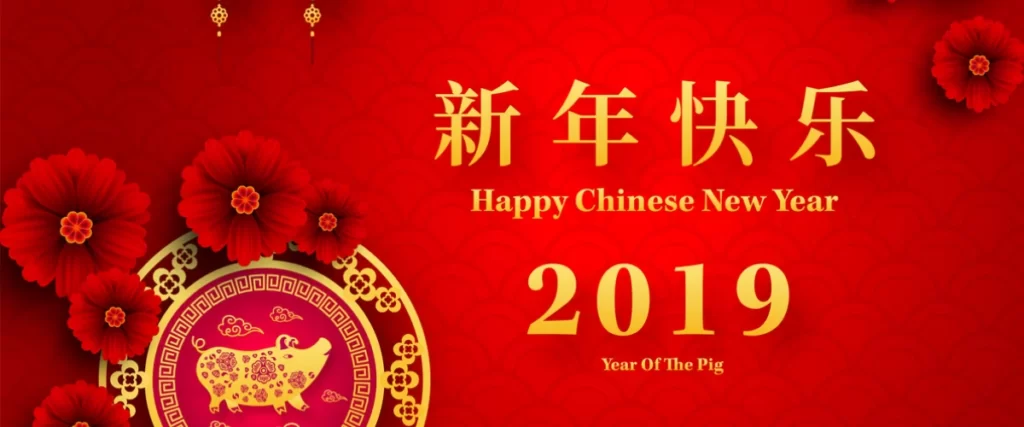During the celebration of the Chinese New Year, the use of symbols is important. To gain a better understanding of the use of symbols in China, I first discuss the concept of culture. I then describe important symbols during the New Year celebrations in China. Such knowledge is important for doing things the right way and communicating better with Chinese customers and partners. In the last part of the article, I go through some words and expressions that you can use during the holidays.
Chinese culture: High context culture
For those who want to expand into the Chinese market, Chinese cultural knowledge is important for success. Chinese cultural knowledge will lead to fewer barriers that hinder cooperation with Chinese players, more trade and better profitability.
When it comes to the lectures I offer to companies on Chinese culture, it is very nice to note that more Norwegian players than before seeing cultural knowledge as important in a strategy to take a larger share of the Chinese market. This is especially true for companies that already have experience in business partnerships with the Chinese. They know that by knowing something about how Chinese people think, it is easier to avoid communication problems.
China has its own history and language, and one can look at Chinese culture as the way Chinese people have developed over several generations. Chinese culture is related to and influences everything that the Chinese do. It includes habits, how Chinese people think and act, ways they relate to others and communicate with others either directly in language or through the use of symbols.
In the book Beyond Culture, the anthropologist Edward T. Hall wrote in 1976 about how different world societies can be seen as 1. countries with low-context culture or 2. countries with high-context culture. In countries with a high-context culture, such as China, much of the communication takes place in other ways than through direct coding through oral language. There is a lot of information that is communicated through the use of symbols. The information is not conveyed by saying something directly but is rather implicit in the communication situation.
In a high context culture, the use of symbols is an important part of the communication situation. In a low-context culture like the Norwegian, much is said directly (direct coding) in oral language. Ignoring these differences easily leads to communication problems and conflicts.
Being too direct in situations where, for example, one is angry at the other party, is seen as rude in China. Great emphasis is also placed on the way a message is delivered. An example here might be gift-giving. If you give a gift, you should use both hands to show respect to the recipient. One should also accept a gift with both hands, and take the time to look at it to communicate to the giver that this is something one greatly appreciates. One should avoid opening gifts immediately or in front of the one who has given the gift, as this is seen as a sign of greed.
When you have a visit from Chinese business partners, you may want to offer them something to eat. Here one should know that many Chinese in such a situation may well say no even if they are hungry. In our culture, which is a low-context culture, you say no when you mean no. In a high-context culture like in China, a person may say no because he does not want to appear greedy. A no is not necessarily a no. If you continue to ask, a hungry business partner will probably answer yes if asked several times. If he is not hungry, then he will continue to answer no.
For those who have Chinese customers or partners, it is therefore important to be aware of the context in which the communication takes place. You want to communicate well with the Chinese by focusing on:
1. In China, there is a great focus on where one belongs hierarchically in relation to factors such as age or position in working life. It is therefore important to have an understanding of the relationship you have with the person you are communicating with.
2. Understanding the use of symbols.
3. Understanding of aspects and factors that affect the communication situation.
When Chinese people now celebrate the New Year, the use of symbols is in many ways more important than what is said orally. If you know enough about the use of symbols during the celebration, you will avoid communication problems.
Chinese New Year
Chinese New Year (Chinese: nónglì xīnnián 农历 新年. New Year according to the Chinese calendar) or the Spring Festival (chūn jié 春节) is the most important of the Chinese holidays. Chinese New Year is celebrated in the first month of the Chinese calendar from the 1st to the 15th day. Chinese New Year starts this time on February 5 and lasts until February 19.
The new year we are now entering is the Year of the Pig (Zhūnián 猪 年), which follows the Year of the Dog. After the Year of the Pig, then comes the Year of the Rat. The year of the rat starts on January 25, 2020. In Chinese culture, there are 12 animals that bring happiness: the rat, the bull, the tiger, the hare, the dragon, the snake, the haste, the goat, the monkey, the rooster, the dog and the pig. In Chinese, it is said to be 12 animals in a 12-year cycle.
The Lantern Festival (Yuánxiāojié 元宵节) is the last period of the New Year celebration, the 15th day. Then you organize lantern exhibitions. The lanterns have many different colours and shapes with popular motifs such as. animals, plants and fabled creatures from Chinese culture.
Red – a symbol of happiness
During the New Year celebrations, China’s streets and buildings are decorated in red, a colour that is a symbol of happiness. Red lanterns hang in the streets, money is given as gifts in red envelopes (红包) both physically and digitally via the payment service in WeChat (wēixìn 微 信), red pieces of paper with New Year’s greetings are hung up in Chinese homes, and in shops and public buildings it hangs New Year photos with New Year greetings in red colours. The gold colour is often used together with red, two colours that together stand for joy and that one respects someone highly.
In China, the number 4 (sì 四) is seen as a symbol of misfortune. This is because the Chinese character for 4 has the same pronunciation as the character for ‘death’: sǐ 死. It is therefore important not to give a sum of, for example, 4 yuan, 44 yuan or 400 yuan in the red envelope. Then it is better to give a sum that has 8 in it, a number that is pronounced bā (Norwegian pronunciation: ba). The pronunciation here is equal to the sign fā 发 (Norwegian pronunciation: fa), which means that the economy is flourishing.
The money given in the red envelope is called yāsuìqián 压岁钱, or “lucky money for the younger generation who will keep the evil spirits away in the new year.”
New Year’s food and symbol use
Confucianism has left deep traces in Chinese culture, a tradition in which courtesy and respect for the elderly are emphasized. In a high-context culture such as China, there are also stronger ties between members far out in the family and others in society than in a low-context culture. For example, the term dàjiā is used when talking about ‘everyone,’ a term that literally means ‘the big family.’
During the New Year celebrations, Chinese people go home to be with their parents and family. The New Year’s dinner (niányèfàn 年夜饭) is also known as the reunion dinner, the most important meal for the Chinese during the year. For this dinner, popular Chinese dishes are prepared, dishes that symbolize joy, good luck and wealth. Popular features during the New Year’s dinner are:
1. Dumplings (jiǎozi 饺子), which due to their round shape symbolize wealth;
2. Fisk (yú 鱼). In Chinese culture, fish represents wealth. The Chinese character for fish has the same pronunciation as another Chinese character yú 余. Yú 余 means “what is left over,” and symbolizes the surplus of money and a desire that we will have more wealth than we need in the coming year. During the New Year celebrations, it is common for Chinese people to say: nián nián yǒu yú ú 有余. This means: Wish you made a financial profit every year to come!
3. Sweet rice balls (tāngyuán 汤圆, Norwegian pronunciation: tang yu-en). A dessert that is eaten all over China during the Lantern Festival. The pronunciation of the dish in Chinese and the round shape, make sweet rice balls a symbol of a family reunion. One then uses the expression tuántuán yuányuán 团团 圆圆 (to-ann to-ann yo-enn yo-enn): A good family reunion!
4. Noodles, which are referred to as ‘long life noodles’ chángshòu miàn 长寿 面. The noodles are long and are a symbol of longevity for those who eat them.
5. Sweet rice cake or Nian Gao (niángāo 年糕), is a cake that symbolizes growth and progress. For Chinese families, this dessert is an important part of the New Year celebration, and it represents a desire for an even better year. Sweet rice cake is well suited as a gift to partners during the New Year celebration.
Common New Year greetings in Chinese
1. Chinese: Xīn nián kuài lè 新年 快乐!
Happy New Year!
2. Chinese: Gōng xǐ fā cái 恭喜 发财!
Wishing you a thriving economy the new Chinese year!
3. Chinese: Wànshì rúyì 万事如意!
Wish you everything goes the way you want it to in the new year!
4.Chinese: Shēntǐ jiànkāng 身体 健康!
Wish you good health in the new year!
5. Chinese: zhūnián dàjí 猪 年 大吉
Wish you good luck in the Year of the Pig.
Chinese phrases that fit in personal, written greetings on New Year’s cards and in emails:
1. Chinese: Gōnghè xīnxǐ, zhù shēntǐ jiànkāng, shìyè fādá 恭 贺新禧 , 祝 身体 健康 、 事业 发达!
Happy New Year! Wish you have good health and that everything you do flourishes!
2. Chinese: Gōnghè xīnxǐ, wànshì rúyì 恭 贺新禧 , 万事如意!
Happy New Year! Let everything go the way you want it!
Learn Chinese
Tordenskioldsgate 3 (2 minutes from the Storting)
0160 Oslo
www.laerkinesisk.no








